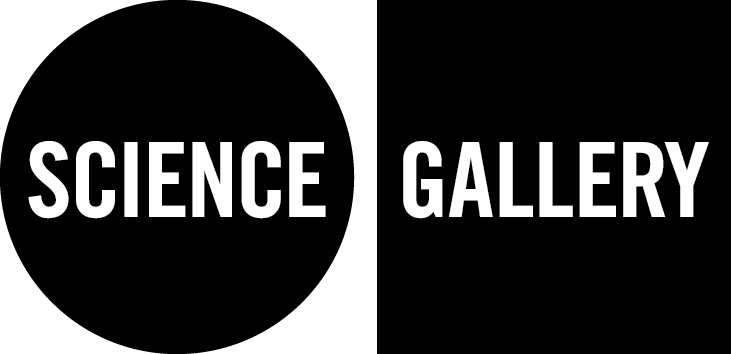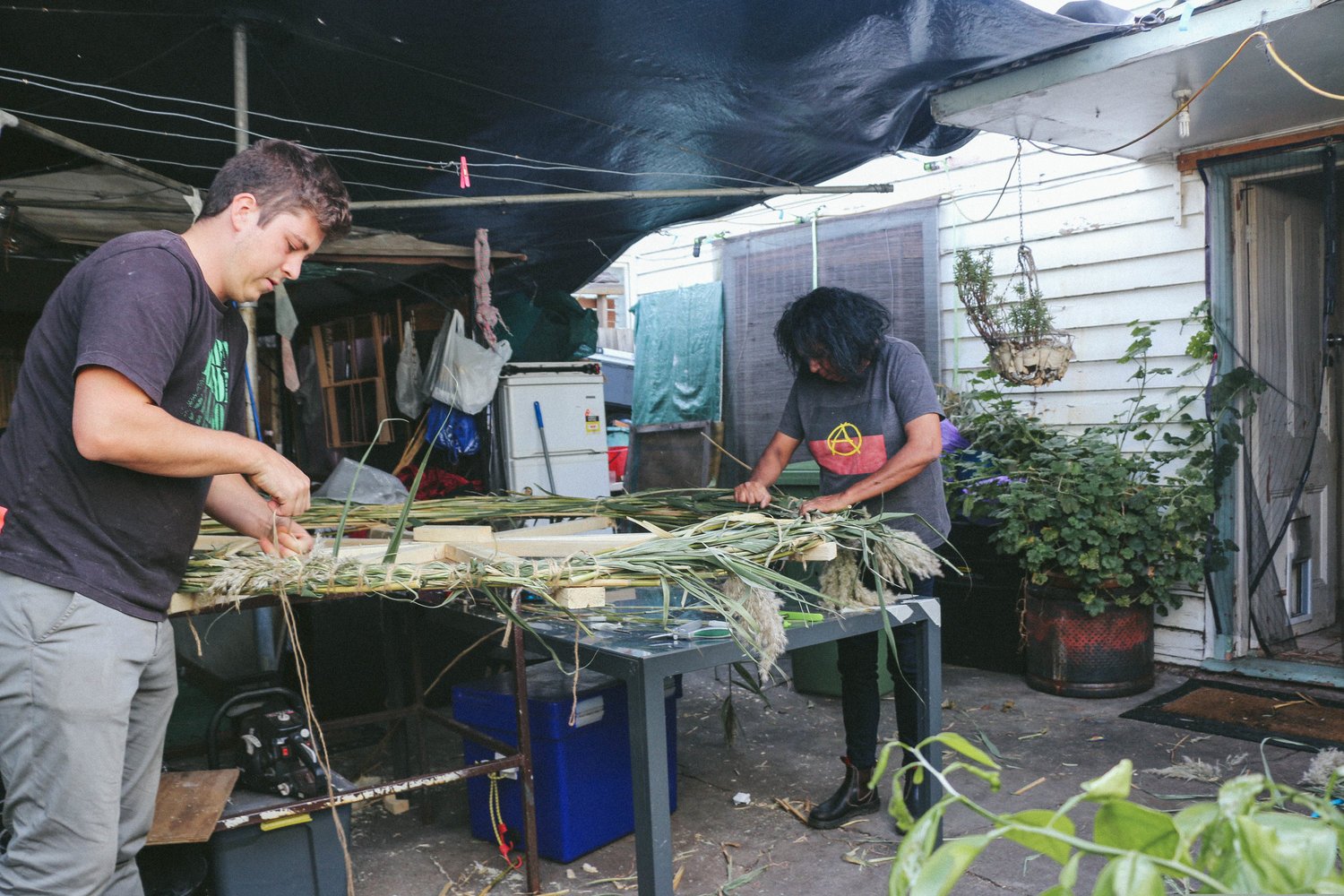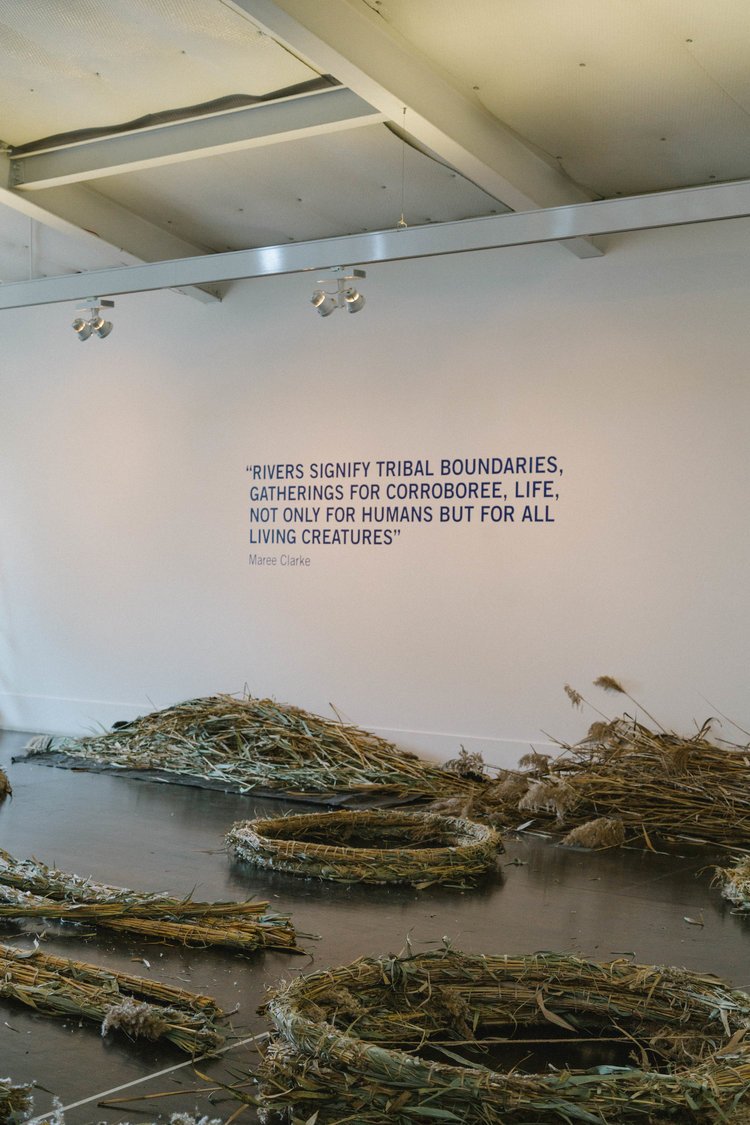Eel Trap: Transforming indigenous knowledge into a collaborative installation
Inspired by traditional Aboriginal eel traps, Eel Trap is a 10-metre installation created by artists Mitch Mahoney and Maree Clarke that was part of Science Gallery Melbourne’s DISPOSABLE exhibition.
Mitch Clarke (left) and Maree Clarke creating the central rings for the eel trap earlier this year in Melbourne. Photo by Maree Clarke
Emerging Boon Wurrung artist, Mitch Mahoney was mentored by Mutti Mutti and Boon Wurrung/ Wemba Wemba established artist Maree Clarke to create a new community work, Eel Trap. The installation, made of thousands of biodegradable reeds and grasses to collect plastic waste on the Maribyrnong River, was inspired by traditional Aboriginal eel traps. The project was presented in partnership with Footscray Community Arts Centre as part of Science Gallery Melbourne’s 2019 season, DISPOSABLE.
The complex installation was created over a period of 3 months, including community weaving workshops with members of local communities. Nearly 700 participants, from high school groups to local families, were involved with the activity, led by Mitch Mahoney and assisted by the Science Gallery Mediator team and First Nations Elders. A crucial part of the project was community consultation, including working closely with Indigenous Elders of the local Kulin Nation. Science Gallery Melbourne’s mediators also had the opportunity to be directly involved with the construction of the piece, working closely with the artists and visitors of the gallery.
“The close working relationship allowed for the exchange of traditional Indigenous knowledge and cultural practice to the team and supported Mitch and Maree in creating an ambitious artwork”
Foraged river reeds from the Maribyrnong river. Photo by Mathew Bate
‘Rivers signify tribal boundaries, gatherings for corroboree, life, not only for humans but for all living creatures.’ – Maree Clarke. Photo by Mathew Bate
A key take-away from the project was for visitors to have a greater awareness, respect and understanding of First Nations knowledge and culture and the role Indigenous cultural practices can help tackle the global climate crisis.
WHAT THEY SAID?
‘This project has been one of the most collaborative and rewarding commissions the Science Gallery Melbourne team has facilitated to date – and an exemplar of genuine community-based engagement. The collaborative experience was incredibly valuable and hands-on for the Science Gallery Melbourne team. Mitch and Maree encouraged the staff and our young curatorial advisors to help with the project at all stages of development – from reed collecting in the Maribyrnong River, to construction of components of the installation in Maree’s backyard studio and weaving in the Footscray gallery. This close working relationship allowed for the exchange of traditional Indigenous knowledge and cultural practice to the team and supported Mitch and Maree in creating a very ambitious artwork’ – Ryan Jefferies, Creative Director at Science Gallery Melbourne
WHAT WERE THE BENEFITS AND IMPACTS?
▶ Interdisciplinary collaboration
▶ Public Engagement
▶ Inspiring creativity
▶ Environmental Sustainability
Sources: Correspondence with Ryan Jefferies
Compiled by: Jahitza Balaniuk, Science Gallery International in 2019
Activity date(s): 2019



